
Marketing
Why are reviews important for your retail store?
Reviews guide customers as they make choices, foster trust, and can even give sales a significant lift. If your clothing...
How to Start an Online Boutique in 2025? [Simple 10 Steps Guide]
Business Kick-Starter Guides

Coming up with the perfect formula for starting and running an online boutique will always be the topic of discussion in a world where everything and everyone is basically ‘existing’ in the online segment.
People are ordering almost every piece of clothing or accessories through online platforms and stores. The reasons are numerous, but the most common ones include:
Seen from the perspective of the owners, it’s much easier to start your own online business because there are no costs for a location lease or expenses aimed at keeping your physical store up and running.
That's why, we've put together a killer 10-step guide that will walk you through everything from A to Z on how to launch and grow your online boutique in 2025.
An online boutique is a virtual selling point where the owner offers various fashionable items like clothing and accessories which can be purchased through the internet.
The online shop might offer different types of clothing to target a certain audience or the selection of products might be broader and offer something for every audience.
Owning an online boutique can be transformed into a lucrative venture as these companies usually experience great growth potential due to the fast market adaptation.
To illustrate how big the eCommerce fashion market is, we’ve consulted a recent report from Statista, confirming that fashion is the biggest eCommerce market segment set to increase by 9.4% annually and reach a size of US$1,103.1 billion by the end of 2027.
In order to get to some point of the launch, the most important thing you need to remember is that you’ll always have to plan some things ahead and be aware of the following:
Starting an online clothing business can be a slightly challenging process, but if you’re following the steps we provide in this article, you’ll be surely set on the path to a successful venture.
Selecting a specific niche within the clothing segment is one of the key elements that need to be determined when starting with your online boutique. Here’s how to do it:
Check out: Winning Products to Dropship
For example, starting an online boutique that’ll cover all sorts of high-end fashion items from world-renowned brands is a very lucrative business idea that’ll bring many fashionistas to your store.
Any additional offers will only act as a “cherry on the top.” Offering high-end brands like Gucci, Dolce & Gabbana, Armani, and other big names is a sure recipe for placing your store in a higher position than your competition that sells regular clothing items.
Check out: Worst Dropshipping Niches
While niche selection plays an important part in your online boutique’s success, another key component you must not overlook is assessing the market and looking for gaps that need to be filled.
There will always be something that the market lacks and isn’t covered by your competitors. Once this something has been identified, it’ll bring you closer to your goals.
However, in fashion, finding this might be a bit confusing as the market’s main inventory is clothing and accessories. But you can always look deeper in terms of what kind of clothing and brands are the least offered and assess whether they’ll be a solid ground for taking them as your main offering.
The important thing to remember here is that in the fashion market, you’ll always have a buyer’s audience no matter what you choose to sell as people love experimenting and buying new stuff online.
Selling designer clothing, for example, will always put you one step ahead of online boutiques that sell unbranded clothing.
Here are a few tips on how to research the market:
Now that you’ve already done your market research and are aware of your potential target audience, it’s time to see which business model will best suit your needs.
In the fashion and clothing segment, there are two common models for doing online business:
Dropshipping represents an eCommerce fulfillment method that allows you to sell things online that you don’t physically own. In other words, you’ll partner up with a dropshipping vendor that’ll process and ship the orders to your customers.
The costs of operating a dropshipping clothing store are minimal which gives you more space and opportunity to work more on your customer service and support system and provide the ultimate experience to your potential clients.
In this way, you’ll generate positive feedback, and your business will grow much faster. You can further read about such an experience in this dropshipping case study.
Best dropshipping suppliers
Wholesale refers to a fulfillment method that allows you to have full control over the inventory by buying in bulk.
Similar to dropshipping, here you’ll also need a reliable wholesale supplier that’ll provide you with the desired inventory. The main difference is that you’ll have to keep track of your storage and have a warehouse where you can store your products.
Best wholesale suppliers
Check out: How to Start Buying Wholesale?
Your business plan is an essential part of your venture. The plan will serve you as a guide through the market penetration and in it, you can set your main goals and the ways you’ll achieve them.
Of course, the business plan will also serve as a secure basis for applying for additional grants and financial assets or presenting your idea in front of investors who are eager to help you emerge more easily on the market.
Here’s how to get it started:
Check out: How to Create a Business Plan?
Crafting the visual identity of your online boutique is akin to setting the stage for your brand’s story. The brand identity you choose is not just a random symbol but the embodiment of your boutique’s image and the unique experience you offer.
It’s the first touchpoint with potential customers and the visual anchor that will keep them returning. By thoughtfully crafting your boutique’s visual identity, you lay the foundation for a brand that’s not only seen but remembered and revered.
These are the most important elements that make up a store’s brand identity:
Slogan: A compelling slogan can encapsulate your brand’s mission or promise in a few memorable words like Nike’s “Just Do It.” Your slogan should mirror the exclusivity of your offerings, promising an unparalleled shopping experience.
Logo: Your logo should not only capture attention but also communicate your boutique’s story and distinctive character. For example, consider the iconic simplicity of the Zara logo, which uses minimalist typography to convey its modern, fashion-forward brand identity, making it instantly recognizable worldwide.
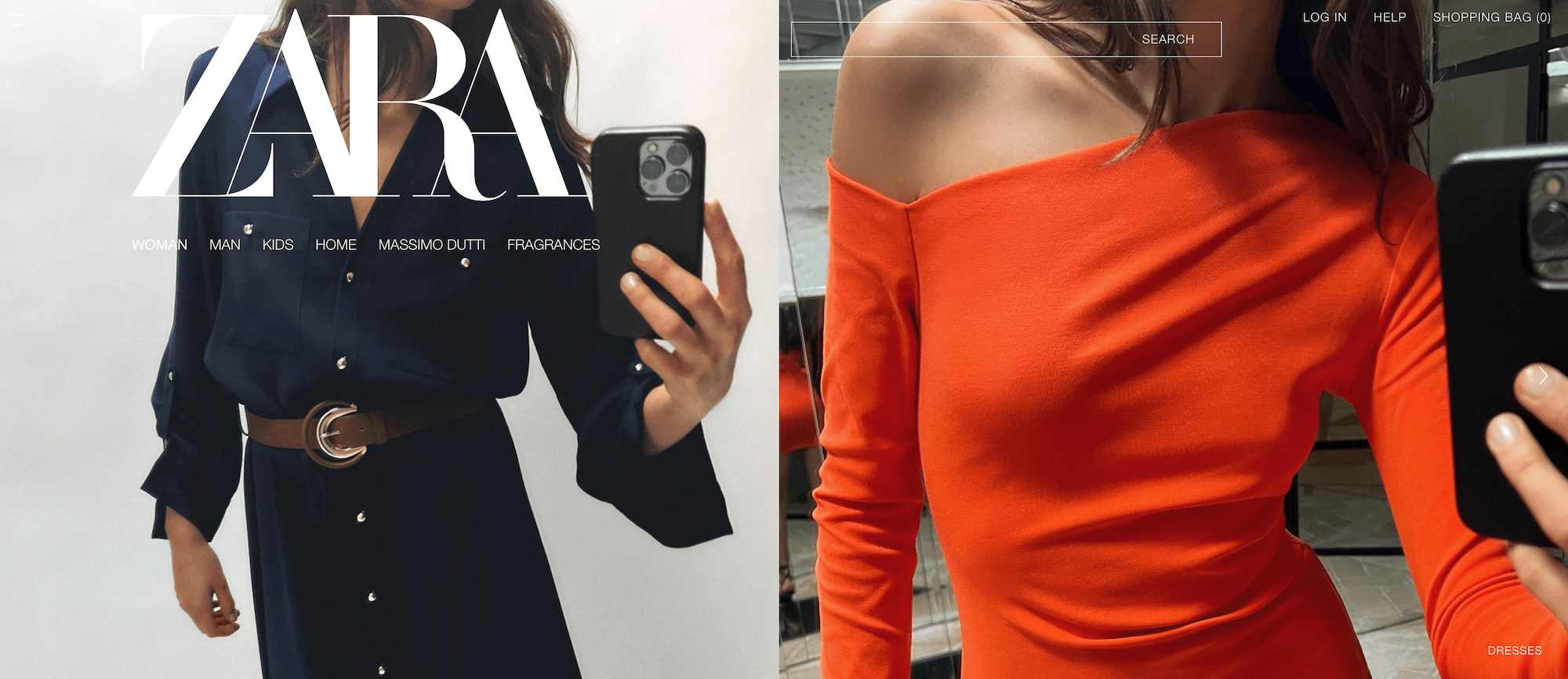
Color Scheme: Color plays a pivotal role in brand identity. It can influence mood, communicate values, and distinguish your brand from competitors. The palette you choose should complement your logo and be consistent across all your marketing materials. To illustrate, ASOS utilizes a vibrant and diverse color palette to reflect its wide range of styles and inclusivity.
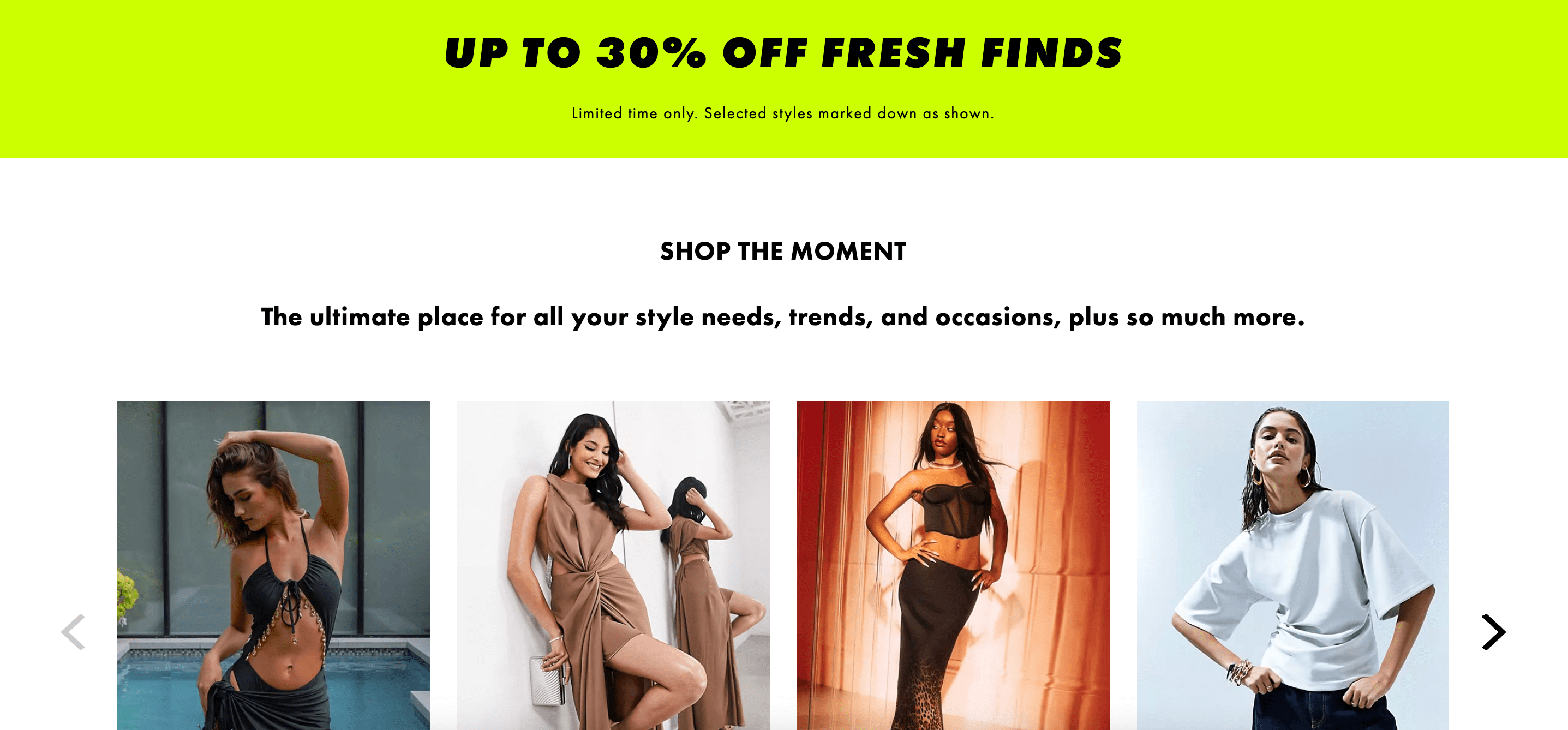
Typography: The fonts you select for your website, packaging, and promotional materials should align with your brand’s character as well. Elegant, serif fonts can suggest tradition and reliability, while sleek, sans-serif fonts might convey a more modern, minimalist vibe which can be seen used by online clothing boutique Everlane.
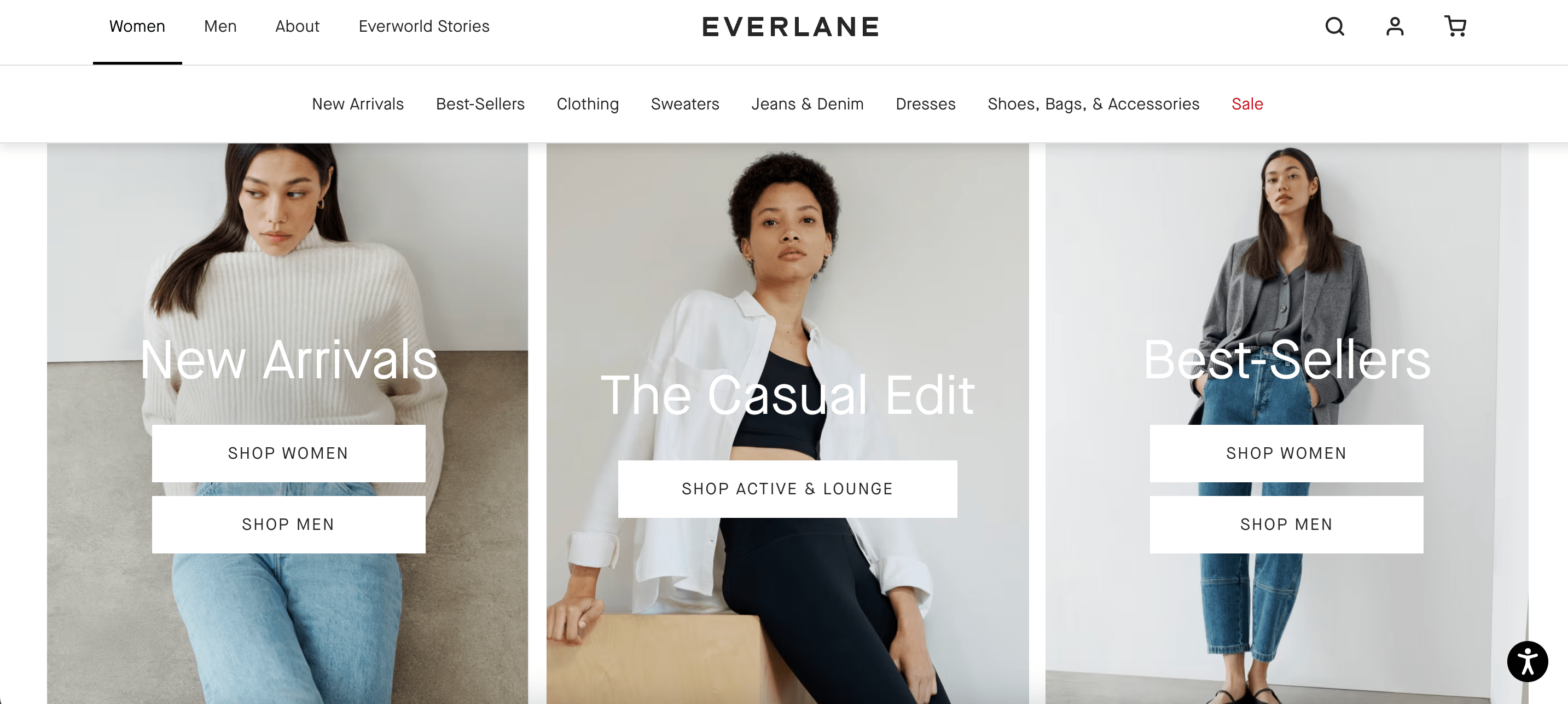
Imagery: The type of images you use in your marketing also speaks volumes about your brand. High-quality, professional photos that showcase your products in the best light are crucial. Mytheresa, for example, utilizes crisp, elegant imagery to highlight the luxury and quality of their apparel, making each piece seem irresistible.

Voice and Tone: How you communicate with your audience, from product descriptions to social media posts, will also reflect your brand’s identity. A brand targeting a younger audience might use a more casual, playful voice, while a luxury brand might adopt a more refined and professional tone such as the online store Fashionphile.
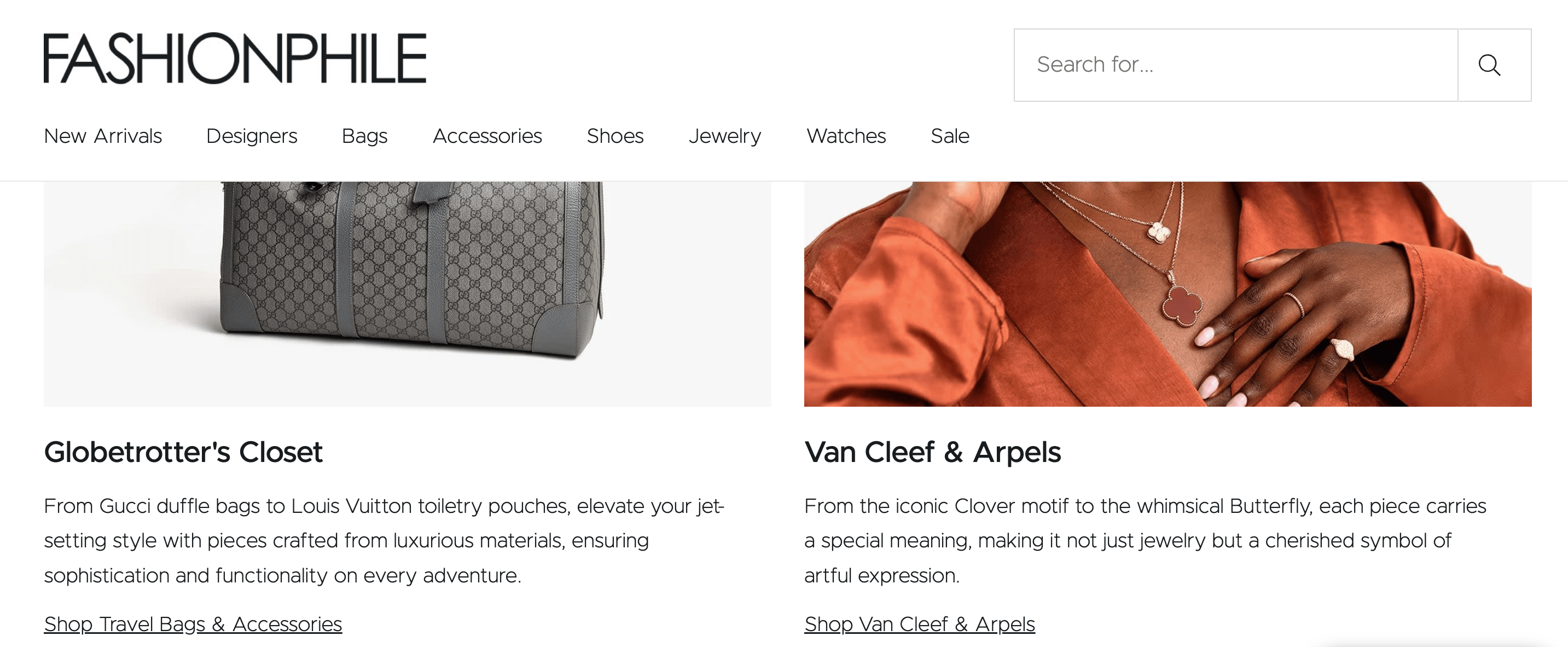
Another thing that needs to be taken care of is the store domain name. The more original and simple but descriptive your domain and subdomains are, the more consumers will actually get interested in exploring the services your business provides.
But there’s one thing here that we can’t omit pointing out. The very first thing you need to do after you come up with a name is to check whether this domain name is available as a domain.
Trust us on this. There’s nothing more annoying than having to go by another domain name just because you came up with something that already exists in the domain directory.
For example, if you decide to go by LuxFash, and if you check on www.domain.com, you’ll notice that LuxFash.com is already taken. The website will provide you with certain alternatives such as .org, .tech, .online, etc.
There’s no big difference in which domain extension you choose, but bear in mind that the most commonly used are .com, .net, and .org.
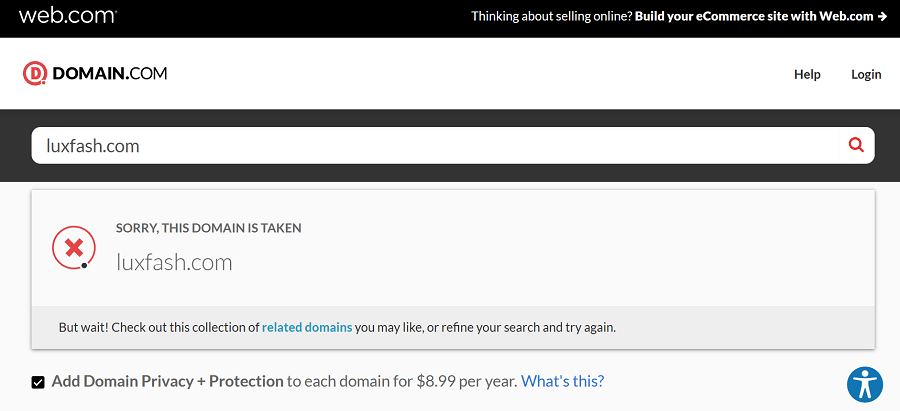
Once you select your domain name, you should also see if that particular name appears on social media handles or elsewhere. You don’t want to end up with an already existing Facebook profile that’ll cause you further problems in your work and customers have a hard time finding you on social media because of this.
Check out: How to Pick Out Store Domain Name?
Your website will be the platform through which your online boutique will run.
Did you know that 94% of the impressions are related to the people’s first glance at your web design?
That’s the main reason why you should take your time and come up with a design that’ll surely spark some curious gazes.
You can bring in a designer who’ll easily do this for you, or you can always check for platforms that allow for easy web-building such as the following ones:
All of these eCommerce platforms can work well with dropshipping stores and online boutiques – you just need to decide whether you want to take care of your inventory yourself or have your supplier deal with it through the dropshipping model.
If you’re in doubt, you can always browse through our platform comparison articles:
However, even if you’re not experienced in this segment, there are web development companies that offer turnkey store solutions, such as LemonDev, especially if you want your store to be based on Shopify.
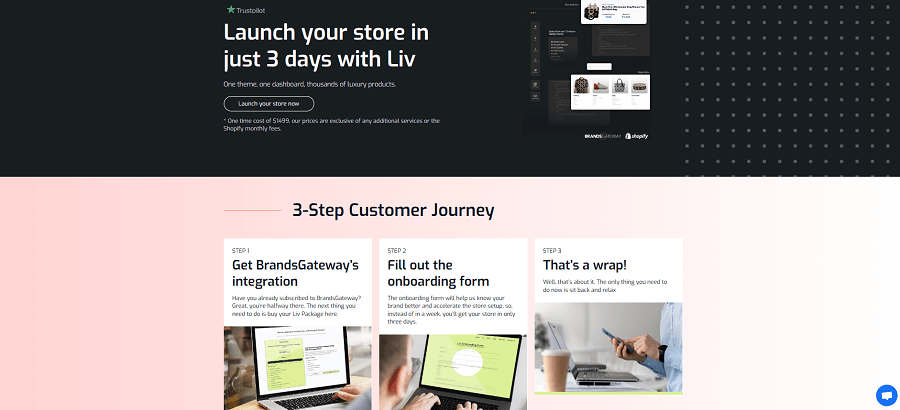
The best way of setting a retail price is by preparing a price strategy which includes:
In some cases, you can benefit from extra help when setting up a pricing strategy. For example, when dropshipping with BrandsGateway, you’d be able to work with high-profit margins and be provided with suggested retail prices.
You can use the following formula to calculate how much profit you’d be earning by selling their products listed below:
Wholesale Price * Markup – Wholesale price = Profit
To put the formula to use, the Jacquemus bag comes with a wholesale price of €399. The recommended retail price is €850, leaving you with a profit of €451.
Check out:
With over half of all internet traffic coming from mobile devices (Statista), ensuring your website is mobile-friendly can significantly enhance the shopping experience for your customers.
On top of that, as of 2023, mobile eCommerce has accounted for 60% of global eCommerce sales, a number that is expected to keep on growing in the years to come.
 You will find more infographics at Statista
You will find more infographics at Statista
Here’s how you can make your store shine on smaller screens:
Once your business is up and running, there’s nothing else left but to start exploring ways to promote it.
To get the most coverage you can, it’s best to combine both free and paid advertising strategies:
Free advertising
Read more: SEO Shopify Practices and ChatGPT for SEO
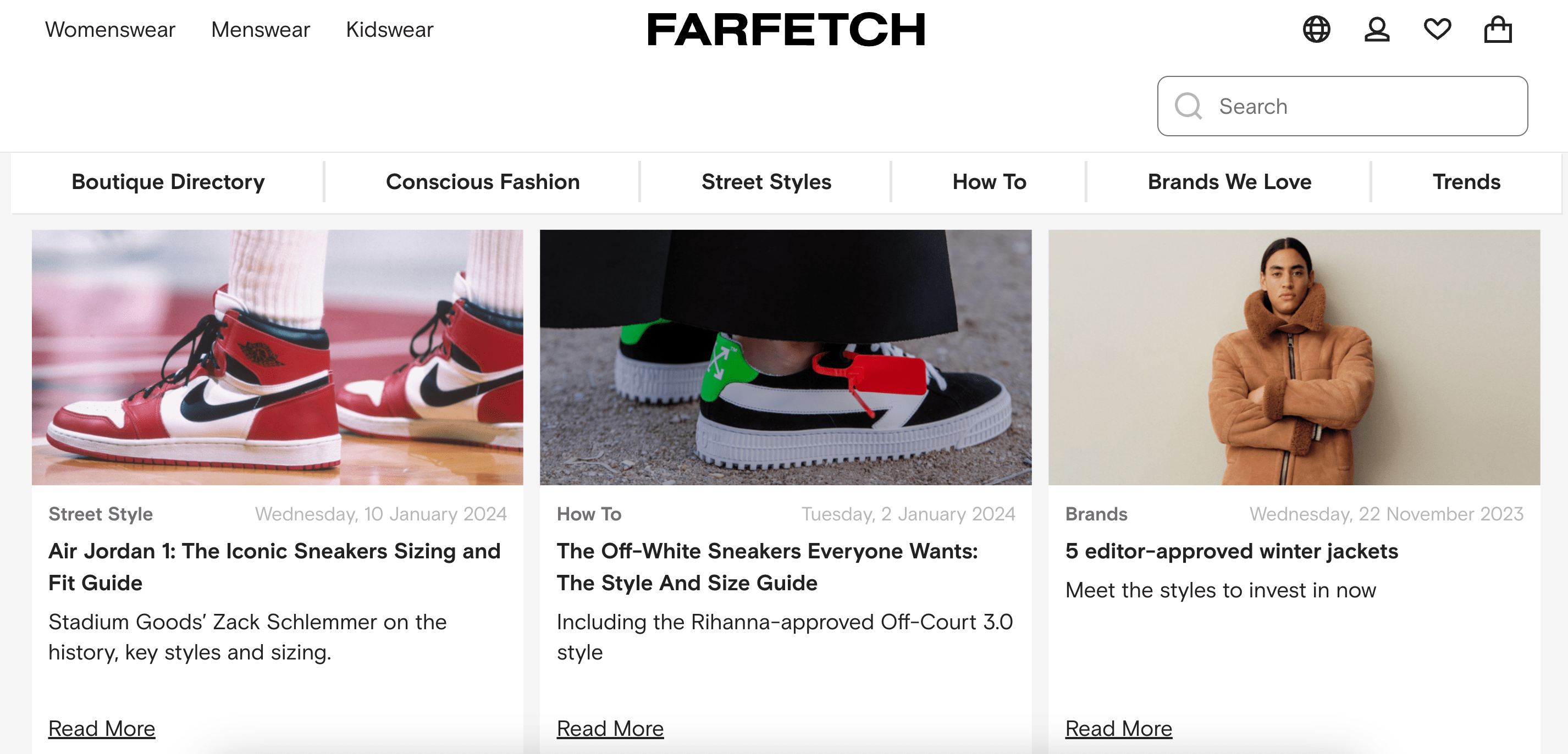
Paid advertising
Read more: How to Use Facebook Ads for Dropshipping?
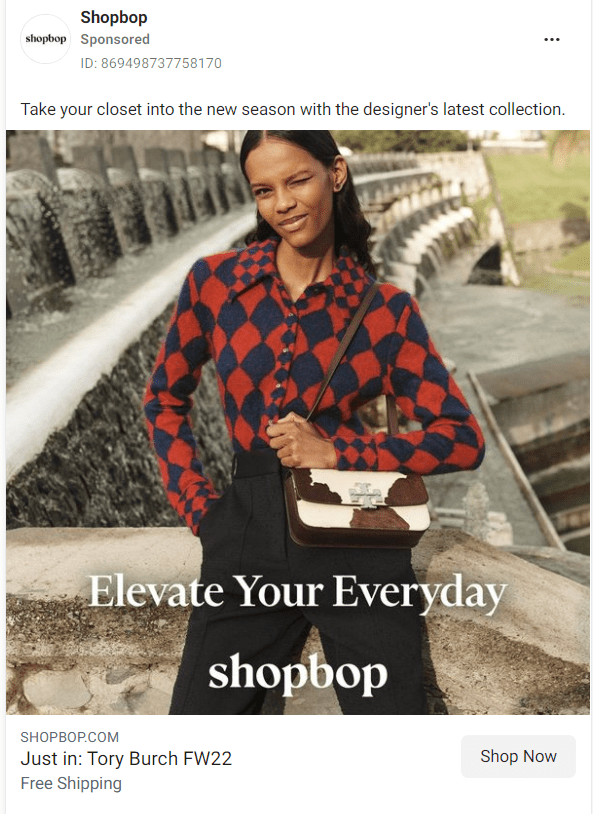
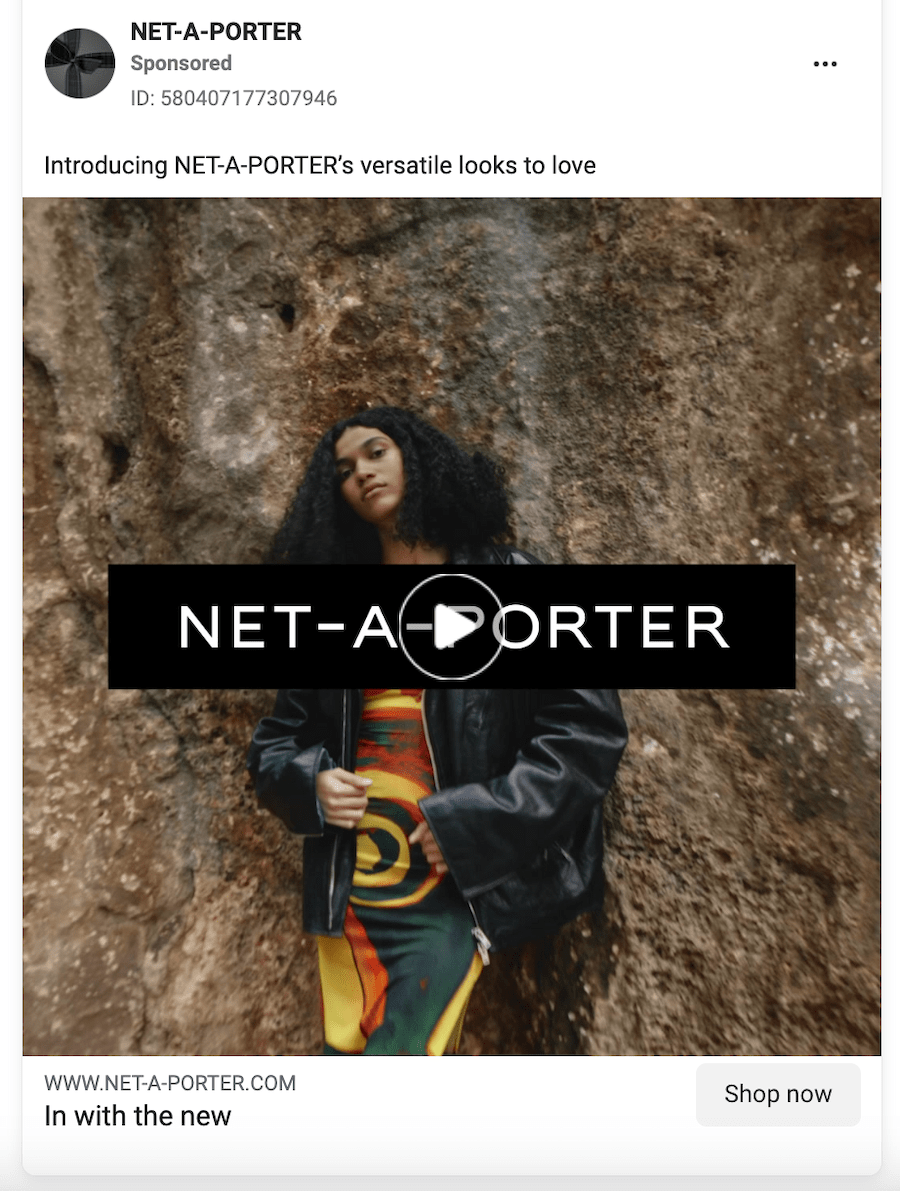
Read more: How to Create Google Shopping Ads?
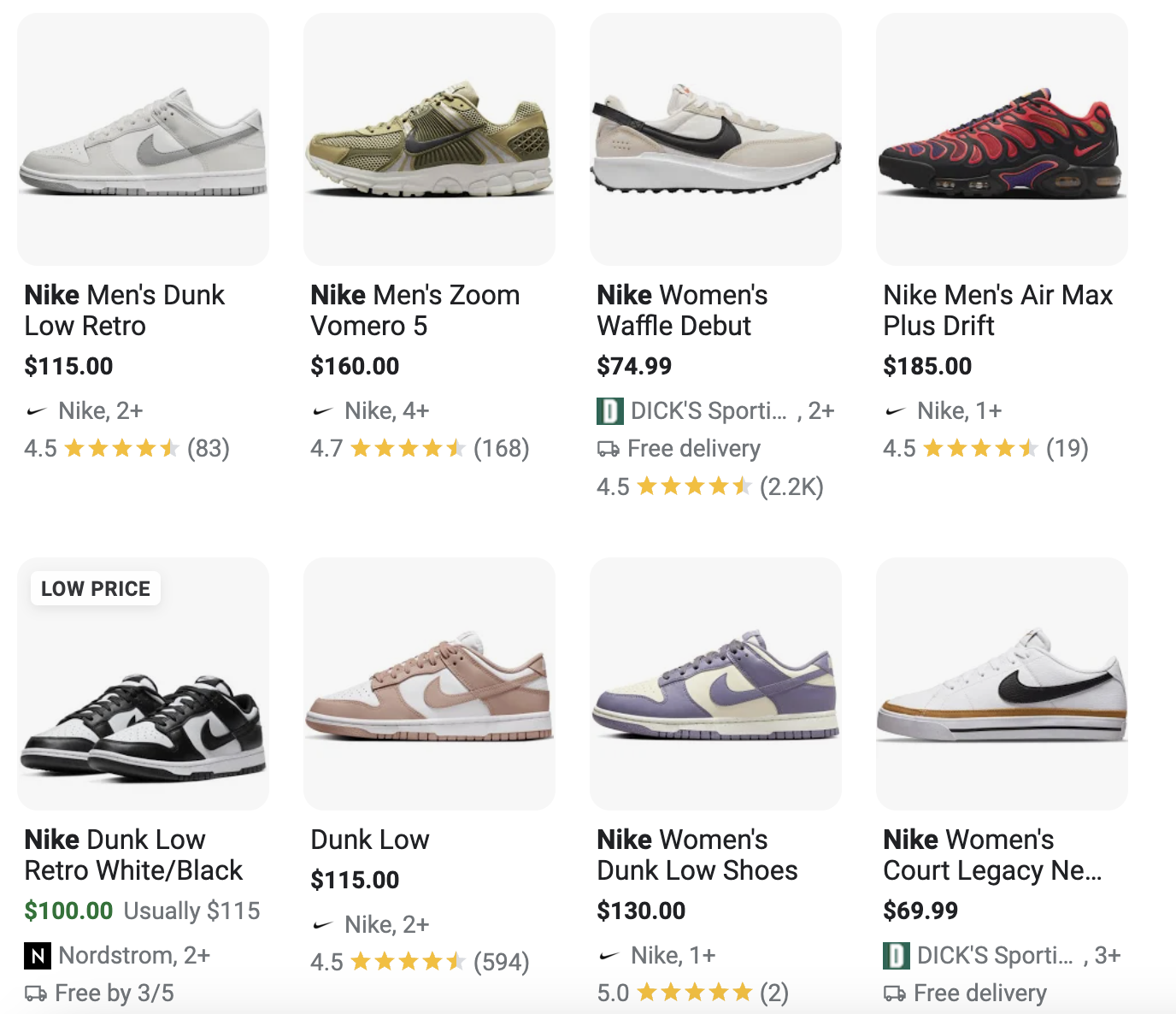
Read more: How to Make Video Ads for Dropshipping?
BrandsGateway is a wholesale and dropshipping supplier that can supply your store exactly with what the market is missing.
Luxury designer clothing is indeed a category that will differentiate your online boutique and set you straight on the path of guaranteed profit.
Whether you are buying in bulk or you are a dropshipping business, BrandsGateway will provide you with the best product inventory:
For further details, check out ‘How to Start Buying Wholesale with BrandsGateway‘ and ‘How to Start Dropshipping with BrandsGateway.’
Embarking on the journey to launch your online boutique in 2025 is an adventure that’s more achievable than you might think. With the roadmap laid out in this guide, you’re equipped with the insights and strategies needed to carve out your path in the digital marketplace.
It’s time to shift from daydreaming to action. With a clear vision, a detailed plan, and the willingness to learn and adapt, you’re ready to set the ball rolling.
Absolutely! Starting an online boutique offers the freedom to curate a unique collection of products and tap into the thriving e-commerce market. With the right strategy, passion for fashion, and a keen understanding of your target market, an online boutique can be a profitable venture that grows over time.
The startup costs for an online clothing store can vary widely depending on inventory, website design, and marketing efforts. Initial expenses include website hosting, domain name, branding, initial inventory, and marketing. Opting for dropshipping can significantly lower upfront costs by eliminating the need for holding inventory.
What is dropshipping?